Stormtrooper Convair Model 48 Charger (USA)
Work on several new reconnaissance and strike aircraft projects began in the fall of 1963. By September of the 63rd, the Pentagon had decided on its requirements and sent out the terms of reference to all leading aircraft manufacturing companies. Nine enterprises received an offer to participate in the competition. The Marines, the naval and air forces, as well as the army expressed their readiness to act as a customer of new equipment aviation. Thus, the successful solution of the tasks promised aircraft manufacturers to receive many profitable contracts.
The development program for a promising aircraft was designated LARA - Light Armed Reconnaissance Aircraft (“Light Armed Reconnaissance Aircraft”). It was assumed that the new attack aircraft will be able to fight the guerrilla formations, as well as solve reconnaissance tasks. It was also planned to provide transportation of goods or soldiers with weapons. On the basis of such requirements, a detailed technical task was formed. LARA attack aircraft had to have a power plant based on two turboprop engines. The machine was to be driven by a tandem crew of two people.
The plane was supposed to carry various rocket-bomb weapons and built-in gun, as well as carry cargo or people. It was necessary to ensure the operation of equipment on small airfields, as well as on water bodies, using float landing gear. The maximum flight speed was limited to 500 km / h, the patrol time in a given area was to exceed 2 hours.
During the first few months after issuing the technical task, the competing companies were engaged in the elaboration of the general provisions of their projects. Preliminary projects were presented to the customer, after which the military identified the “finalists” of the competition. The most successful customer considered the development of the companies North American, Martin and Convair. The proposed attack aircraft had a certain similarity, but differed in one or other features. According to the analysis of the pros and cons of the proposed projects, it was planned to choose the winner of the competition.
According to some data, already at this stage of the LARA program, the structure of the armed forces disagreed. Thus, the army and the Marine Corps showed a greater interest in the development of the company Convair. At the same time, other potential customers inclined towards the OV-10 Bronco project. In the future, such disagreements led to some specific consequences. In particular, it was at the insistence of the army and marines that it was decided to complete the development and subsequent construction of the prototype Model 48 aircraft.
Already in September, 1964, just a year after the start of the design, the development company presented a prototype of its light attack aircraft. The project carried the working designation Model 48 and the additional name Charger. It is under these names the development remained in stories aviation.
LARA aircraft had specific requirements for the range of tasks to be solved. Such a technical task led to the formation of the original appearance of the aircraft. Like other "finalists" of the competition, the Model 48 attack aircraft was built according to a two-beam scheme using a relatively short fuselage with volumes for equipment and cargo placement. Also, an original aerodynamic scheme with some characteristic features was formed to meet the requirements. For example, the aircraft was supposed to differ in unusual wing proportions.
For maximum ease of construction, almost the entire airframe of the Convair Charger was made of aluminum. The only exceptions were the nose cone and wing tips, which should be made of fiberglass. Such an aircraft design gave the required strength and acceptable weight: the empty machine weighed just 2020 kg.
The aircraft received a relatively short fuselage streamlined shape. Provided for the use of an ogival nasal fairing, smoothly turning into vertical sides. The upper surface of the fuselage, which housed a common cockpit lantern, received a profile that was close to elliptical. A wing was attached to the fuselage near the rear of the cabin. Behind the wing was the tail section of the fuselage, proposed for the transport of certain goods. Most of the volume of the structure with a double cabin.
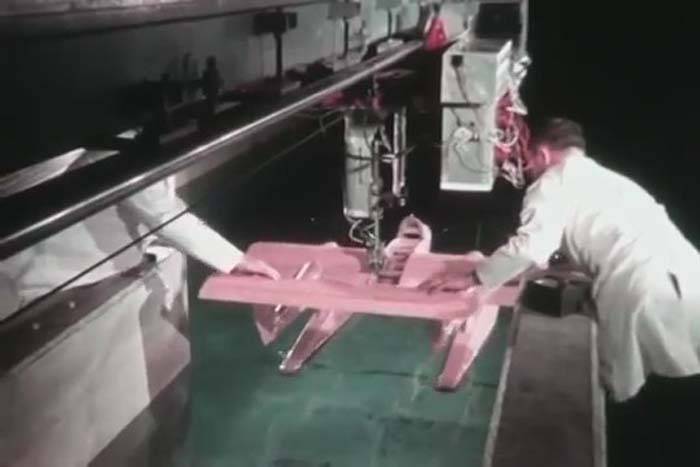
Testing models with float chassis. A shot from the newsreel
At the minimum possible distance from the fuselage on the wing nacelles of engines were placed, made in the form of single units with tail beams. Due to the need to mount the engines, the front part of the gondola-beams had an enlarged section. The tail parts were lower and narrower. On the beams were two vertical keels, which served as a support for the stabilizer of the original design with a span of more than 6,5 m.
Model 48 received a straight wing of a constant profile, equipped with several internal fuel tanks. A characteristic feature of the wing was a relatively small span - 8,38 m. However, with a wing area of 24,1 sq. M and a relatively small mass of the aircraft, we managed to get acceptable lift indicators. In addition, significant portions of the wing were blown with engine screws, which also improved its performance. The wing mechanization consisted of four-section flaps installed throughout its span, as well as ailerons and interceptors. The latter were used to improve handling at low speeds. On the leading edge were deflected flaps.
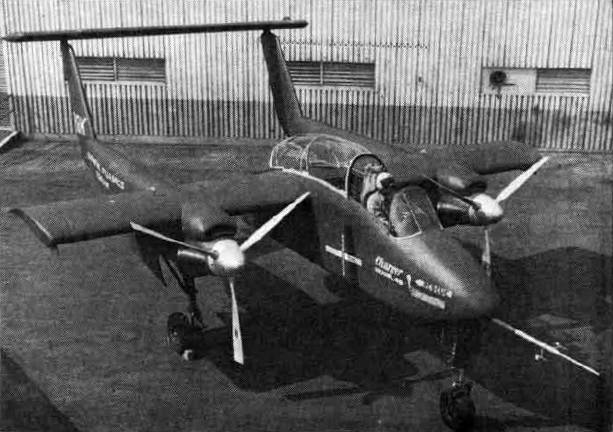
The plane at the beginning of the test. Wikimedia Commons Photos
The yaw control was carried out with traditional rudders placed on the keels. An unusual controllable stabilizer design was developed for pitch control. The latter was divided into two moving sections capable of differentially deviating from the neutral position and thereby changing the nature of the flow around the stabilizer. Such a control system by changing the wing curvature made it possible to obtain the required characteristics at all flight speeds.
The power plant of the Model 48 attack aircraft was to be based on two Pratt & Whitney Canada T74-CP-8/10 turboprop engines with 650 hp each. each. The engines were placed in the wing nacelles and equipped with three-blade controlled Hamilton Standard propellers with a diameter of 2,59 m. Due to the characteristic layout of the airframe, the propeller discs were swept away in the immediate vicinity of the fuselage sides. The project also assumed the possibility of using Garrett AiResearch T76 engines with a capacity of 550 hp.
The crew was supposed to be placed in a common cabin, closed on top of a large lantern. To improve the safety of pilots when hitting land targets, the frontal part of the lantern received armored glass. In the cockpit in tandem there were two ejection seats and two control posts. The front cockpit was designed for the pilot and had a full set of equipment necessary to control the machine and weapons. The place of the second pilot received other equipment, since the task of this crew member was to conduct reconnaissance and work with cargo in the tail section.
The Convair Model 48 attack aircraft should not have been fitted with built-in armor. The only "own" means of protection for the crew and units was the bulletproof glass panel comprising the lantern. However, the project did not exclude the use of additional hinged armor. Modules of additional protection in the form of aluminum plates of the required thickness could be hung on the sides, as well as on the upper and lower surfaces of the fuselage. In this case, the armor remained outside, outside the skin.
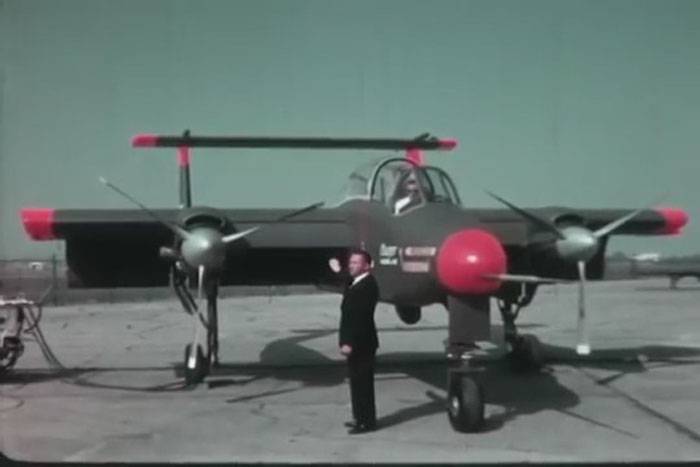
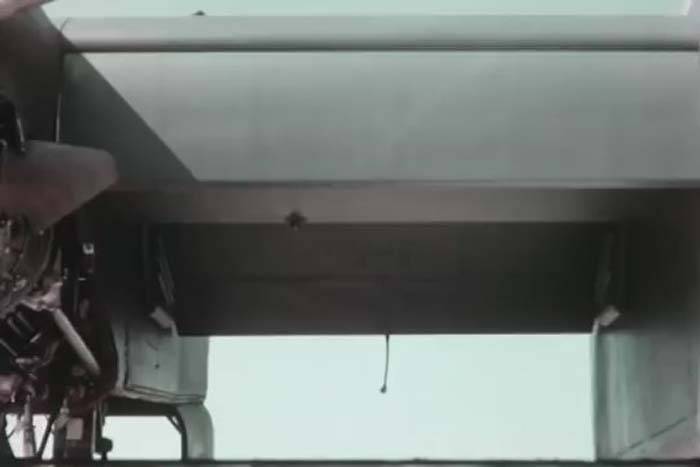
Demonstration of the mechanization of the wing. Newsreel footage
On the sides of the fuselage provided for the installation of two containers with machine-gun armament. Two 7,62-mm M60 machine guns with 500 ammunition ammunition for each were placed in the container. Also, the project offered to equip the aircraft with five external suspension nodes. Two pylons were located near the wing tips, another two between the fuselage and engine nacelles. The fifth point of the suspension was placed under the fuselage. At the central underwing nodes it was possible to place weapons with a mass of not more than 500 kg. The load capacity of the other pylons was limited to 270 kg.
The attack load is determined in 910 kg. Depending on the task, the machine could take on board missiles and bombs of various types, small cargo cassettes, incendiary tanks, etc. Also provided for the possibility of using missiles AIM-9 Sidewinder, necessary for self-defense against enemy fighters.
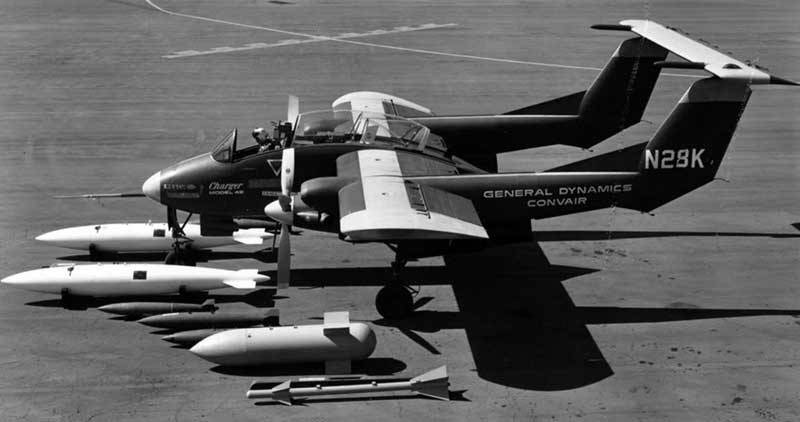
Possible aircraft armament. Photo Combatreform.org and Dogswar.ru
According to the terms of reference, a promising light aircraft was not only to carry out strikes against ground targets, but also to solve some other tasks related to conducting reconnaissance and transportation of various cargoes. For the transportation of a payload, the aircraft received a special compartment in the rear fuselage. Directly behind the cockpit was a certain amount to accommodate people or goods. The compartment dimensions allowed to carry up to five paratroopers with weapons or three wounded on stretchers. It should be noted that the landing was given the minimum possible volume, because of which its compartment was not very convenient. Also in the fuselage could transport cargo corresponding to the parameters of the aircraft.
For operation on unpaved airfields and to improve the take-off and landing characteristics, the Charger project has developed a three-post chassis of the required design. The front desk was located in the nose of the fuselage, the main - in gondolas, under the engines. Cleaning the chassis was done by turning back. In accordance with the requirements of the customer, it was possible to replace the wheels with floats. After such a "modernization" the plane could work with water.
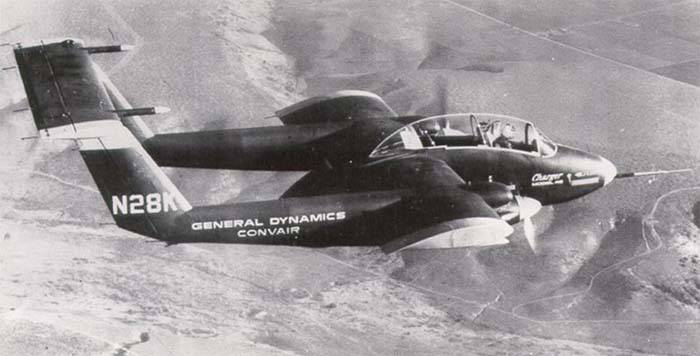
Test flight. Photo Airwar.ru
The total length of the Model 48 aircraft was 10,61 m, the wing span was 8,38 m. The parking height was 4,14 m. The empty plane weighed 2020 kg, the normal take-off weight was determined at the level of 3220 kg, the maximum load was 3,3 t. kg, for fuel - 910 kg. Using a full-time power plant, attack aircraft could reach the ground speed to 530 km / h. The ceiling reached 513 m, distillation range - 6500 km. The combat radius was 4800 km. There was the possibility of patrolling in a given area for two hours. Take-off and landing could be carried out at sites no longer than 470-155 m.
The Convair project attracted the attention of some potential customers, but the need to build and test a prototype machine has been a topic of controversy for some time. As a result, the army and the marines were able to push through the decision, so that in September 1964, the development company rolled out the first and, as it turned out, the last prototype of a prospective light attack aircraft reconnaissance aircraft. For several reasons, the construction of the prototype had to use an alternative power plant based on reduced-power T76 motors. This adversely affected the general characteristics of the aircraft, although it could not reduce them to unacceptable values.
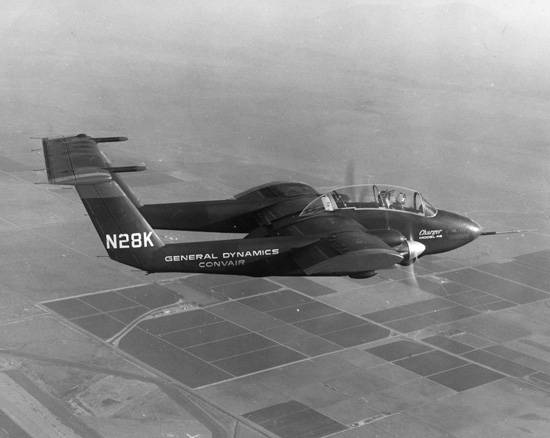
Prototype in the air. Wikimedia Commons Photos
For several weeks, an experienced attack aircraft Model 48 Charger passed the necessary ground tests. 25 November 1964, the prototype first took to the air. Soon, test pilots, including those representing various potential customers, conducted comprehensive machine checks. It was found that the aircraft loses to other developments of the LARA program according to some characteristics. At the same time, it showed significant advantages in take-off and landing parameters. So, for lifting to a height of 15 m, he needed less than 150 m for takeoff and flight. At the same time, the requirements for the project indicated the take-off distance in 244 m. Also, the machine was well controlled at all flight speeds, including low ones.
Based on the results of the checks, a list of necessary changes to the project was generated. Customers demanded to increase the size of the cargo compartment and perform some other improvements necessary to reduce the gap from competitors. After solving such problems, the project could well count on the contracts of the military department.
A promising light attack aircraft was of interest to several departments at once, which led to an expansion of the test program. In addition to the test pilots of the enterprise-developer, pilots of the armed forces and research organizations began to be involved in testing machines. In the cockpit of an experienced Model 48 worked representatives of NASA, Air Force, Navy and ILC. Similar trials continued until mid-autumn 1965.
October 19 The 1965, a prototype attack aircraft under the control of a naval pilot, went to the 196 test flight. During this departure, one of the engines crashed, which caused the tester to return to the airfield using only one motor. During landing, the aircraft behaved unstably, which led to the fall and destruction of the machine. The damage was so serious that the repair of the prototype was impossible.
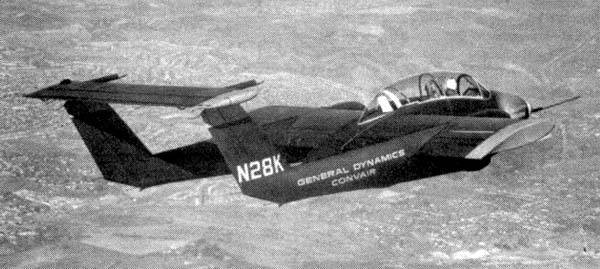
Model 48 Charger in the air, you can see the design of the stabilizer. Photo Airwar.ru
After the loss of the prototype, further work on the project was in question. The controversy concerning the continuation of the LARA program has intensified again. The development and construction of the new attack aircraft Convair Model 48 took a while, while other aircraft of similar purpose were successfully tested and showed their advantages. The result of numerous discussions, disputes and consultations was the refusal to continue the work. Despite certain advantages, the Charger was inferior to its competitors in some characteristics. Because of this, its further development was considered inexpedient.
At the end of 1965, all work on the Model 48 reconnaissance aircraft was curtailed due to a lack of interest from potential customers. However, the LARA program continued. A few years later the military chose the winner of the competition. It was the North American OV-10 Bronco project. At the end of the decade, this aircraft was put into service and entered service. Other projects that claimed to win the program were closed. Nevertheless, the draft of the attack aircraft Convair Model 48 Charger "did not live up to" this point.
On the materials of the sites:
http://globalsecurity.org/
http://airwar.ru/
http://combatreform.org/
http://dogswar.ru/
http://snafu-solomon.blogspot.ru/
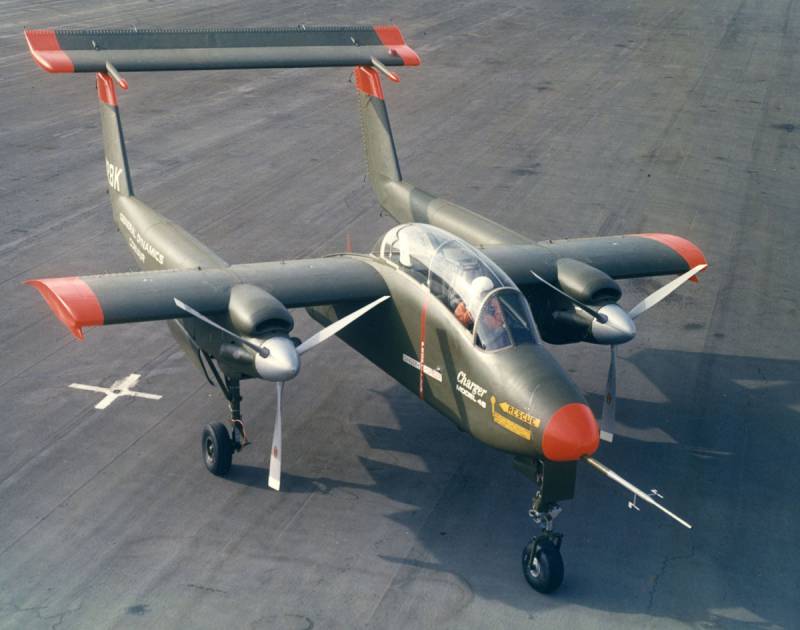
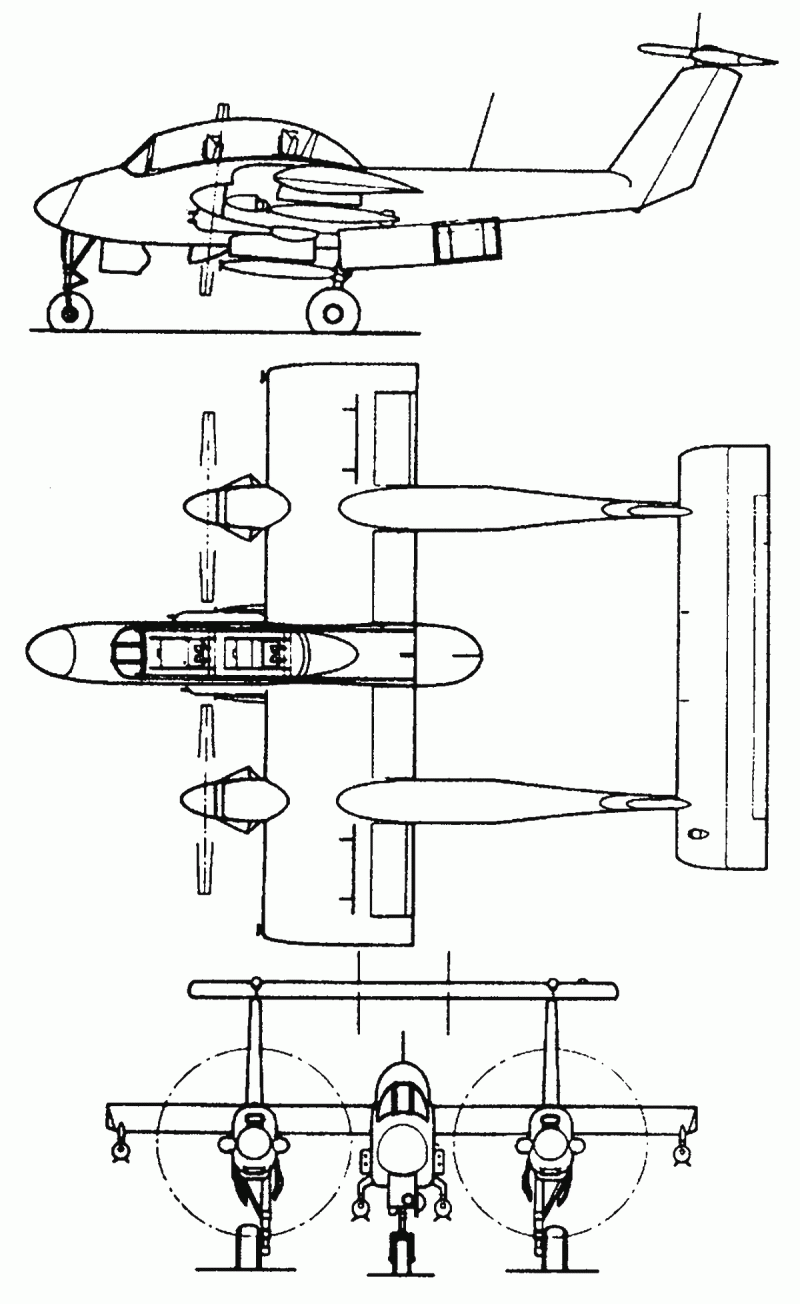
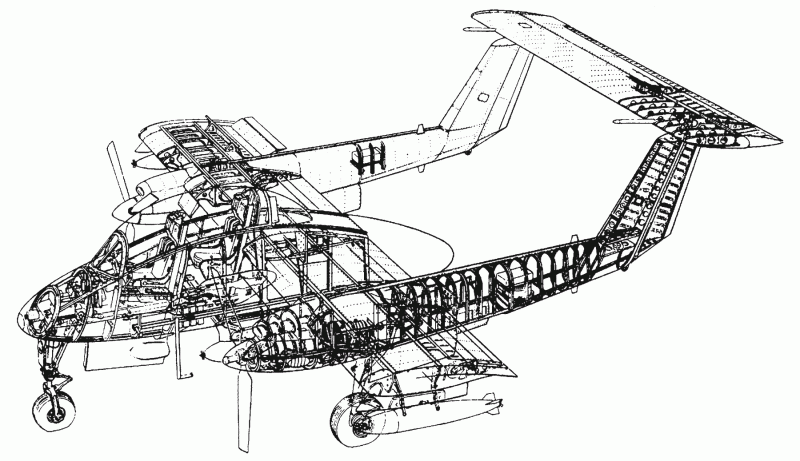
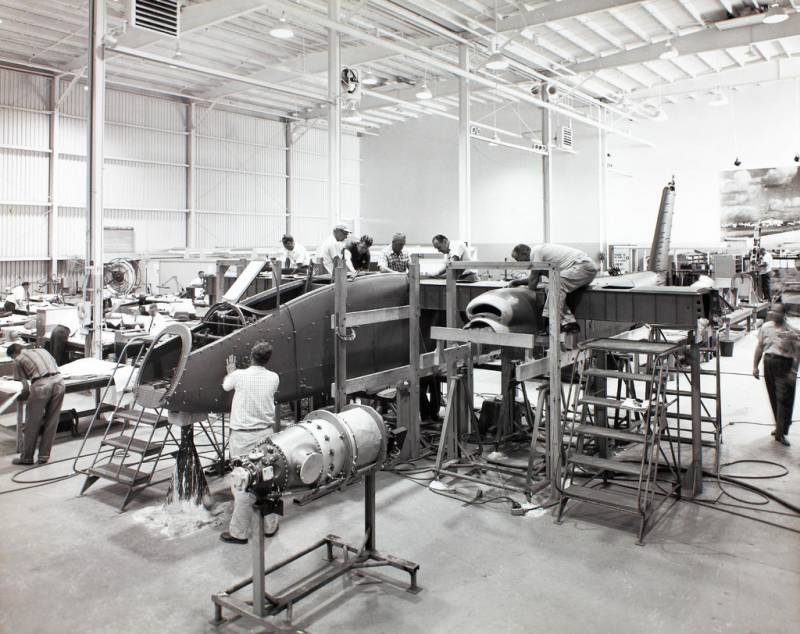
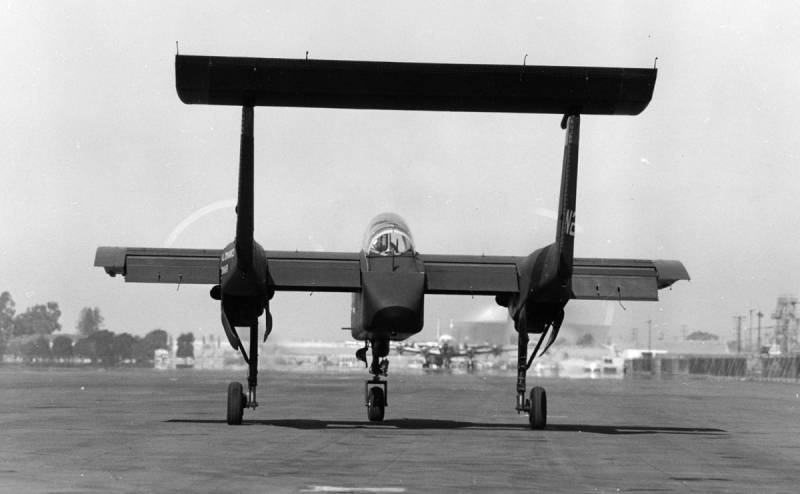
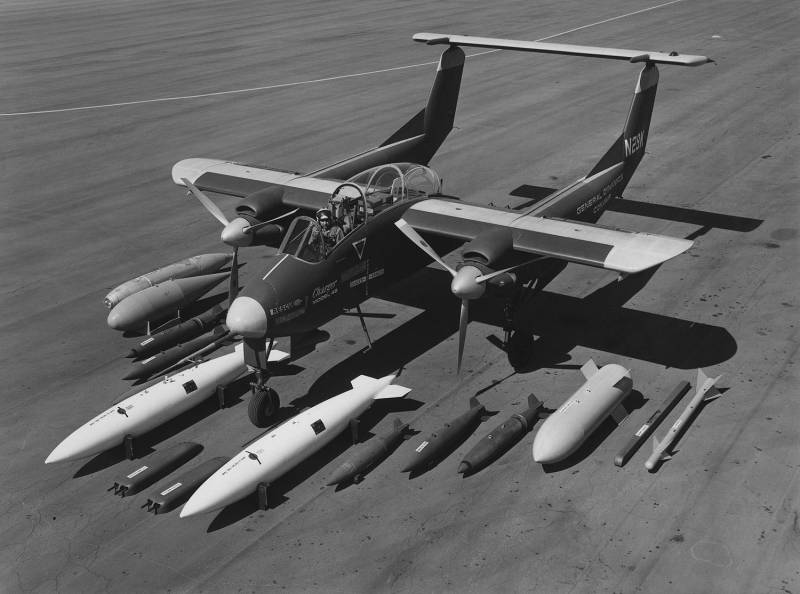
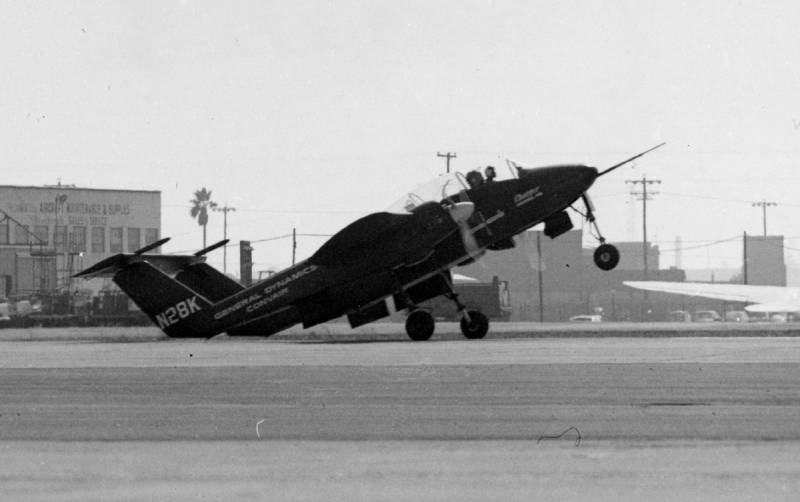
Information